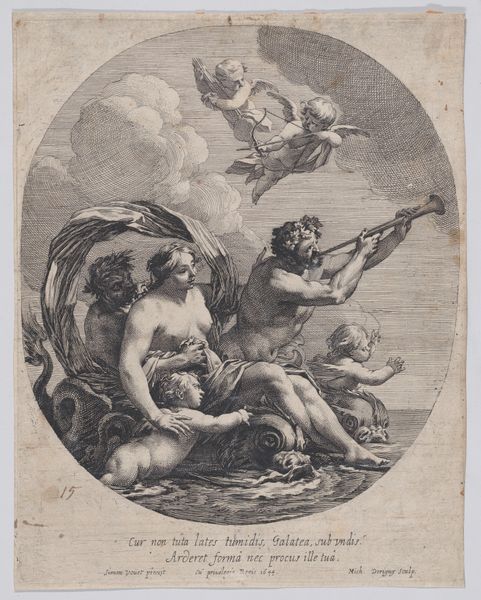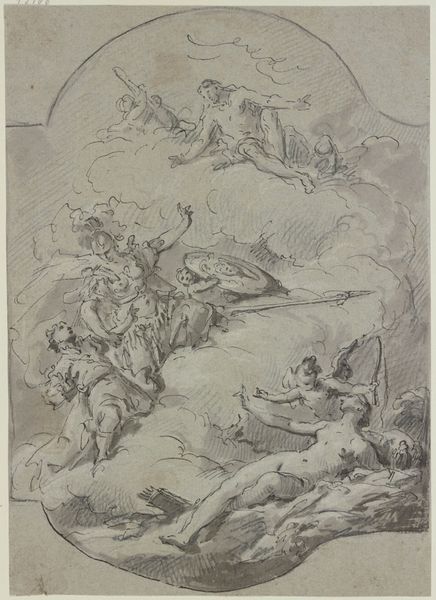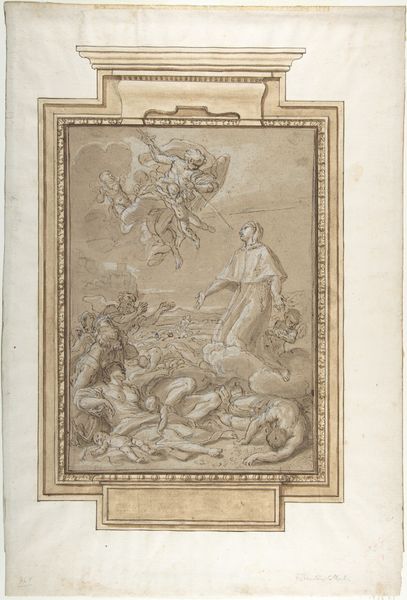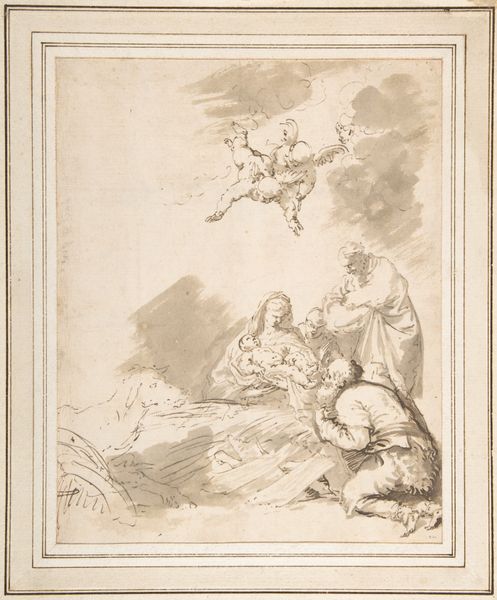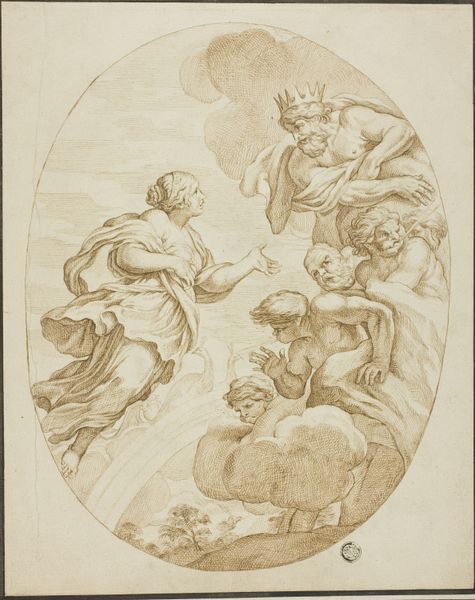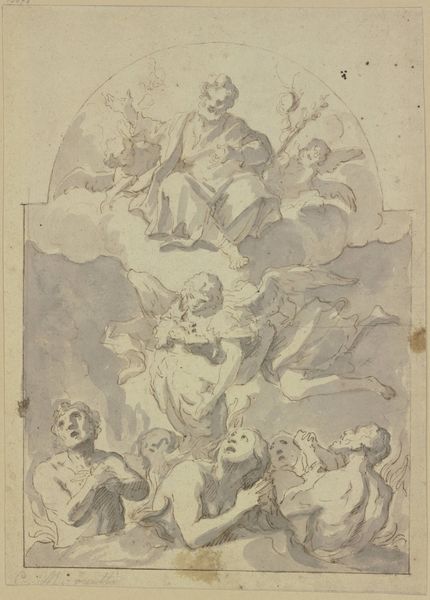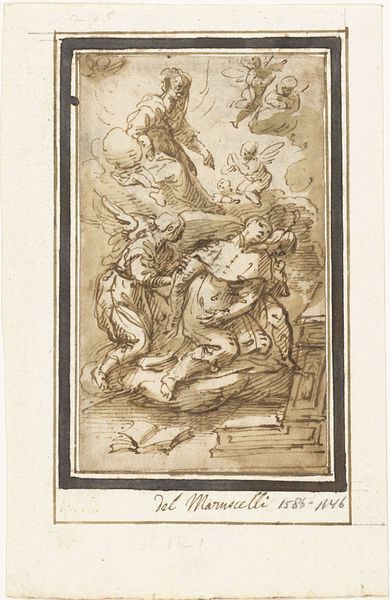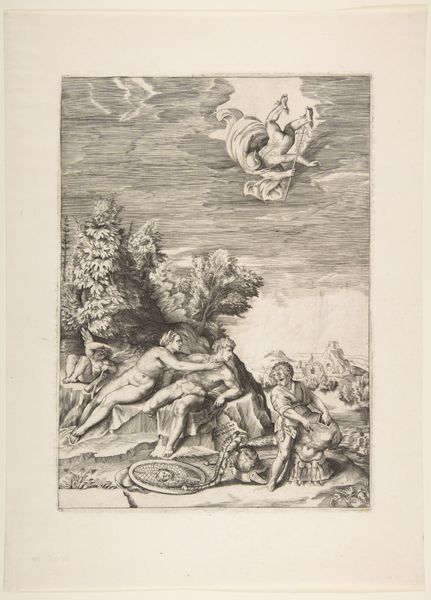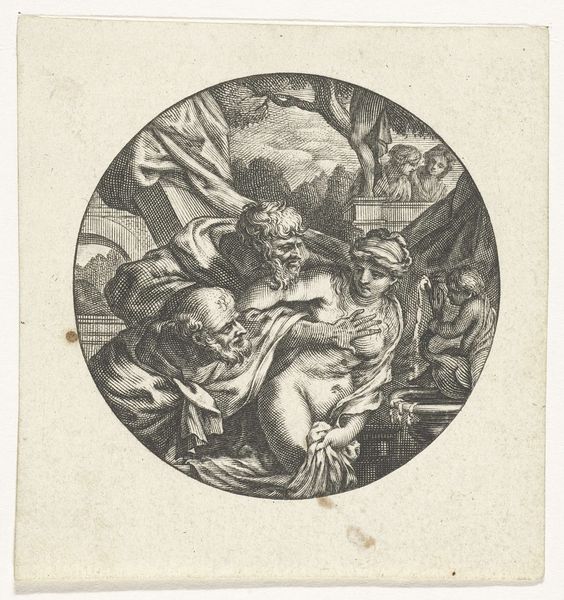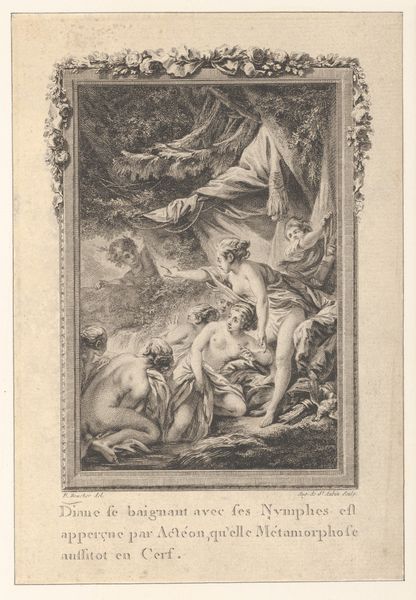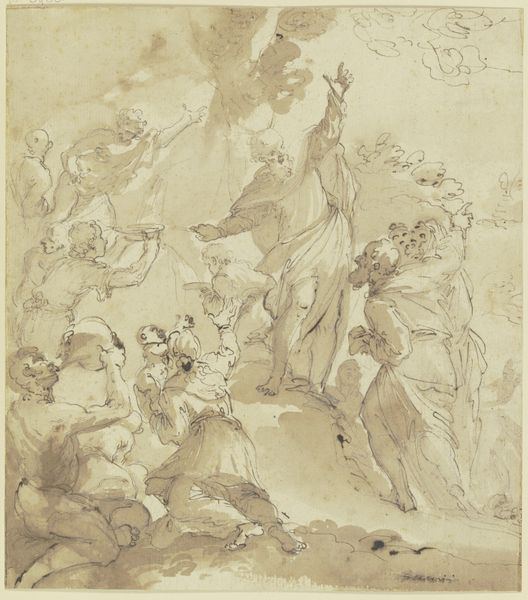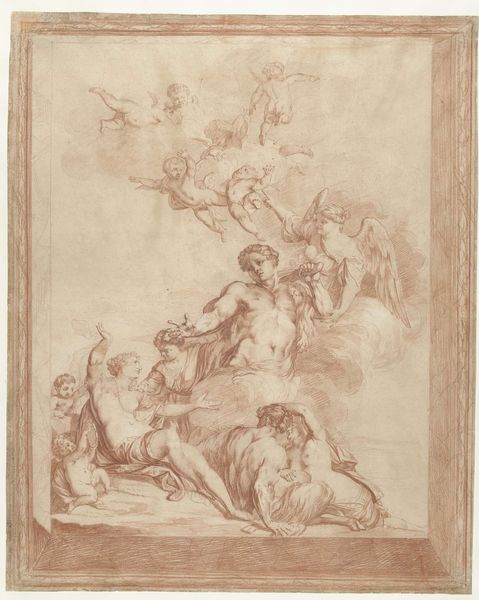
drawing, print, pencil
#
drawing
#
allegory
# print
#
pencil sketch
#
figuration
#
11_renaissance
#
pencil
#
nude
Dimensions: 9-7/16 x 8-3/8 in. (24 x 21.2 cm)
Copyright: Public Domain
Editor: So, we’re looking at "The Triumph of Galatea," made sometime in the 17th century, artist unknown. It’s a pencil drawing, a print of some sort, and it has this delicate, almost ethereal quality to it. What strikes me most is how the figures seem to emerge from the paper itself. What’s your take on it? Curator: The piece immediately directs our attention to its production, wouldn't you say? Note the graphic rendering - its reproduction suggests distribution among a bourgeois or noble class interested in classicism, thus pointing to a system of luxury, not necessarily of the sublime or transcendence that the subject evokes. Editor: That’s an interesting perspective. So you're focusing on its production as a reproducible print, rather than the mythological narrative itself? Curator: Exactly. How was this image circulated? Who was consuming it and under what conditions? This goes to the very heart of what the work *means.* Is it truly about celebrating Galatea's triumph, or more about the social display enabled by its material form? Editor: So, it is less about the allegory of Galatea, and more about class, artistic distribution, and consumption of artwork during the time it was made. So it suggests privilege and access… a completely different reading than the romantic, idealized one I first assumed! Curator: Precisely! And consider the artist's hand here—anonymous, yes, but complicit in this cycle of production and consumption. Was it merely the rendering, or was it in itself participating and advancing this notion? It compels us to investigate labor of the artistry and how it is also, perhaps, reflective of material gain. Editor: That totally reframes how I see it. I was caught up in the imagery, but now I’m thinking about the actual physical object and its journey. Curator: Indeed! This invites us to interrogate its creation and purpose beyond just aesthetics or classical allusion. I learned to look at distribution networks as important meaning-makers. Editor: I now realize that art doesn’t exist in a vacuum. The circumstances of its creation and how it was consumed give it added significance!
Comments
No comments
Be the first to comment and join the conversation on the ultimate creative platform.
